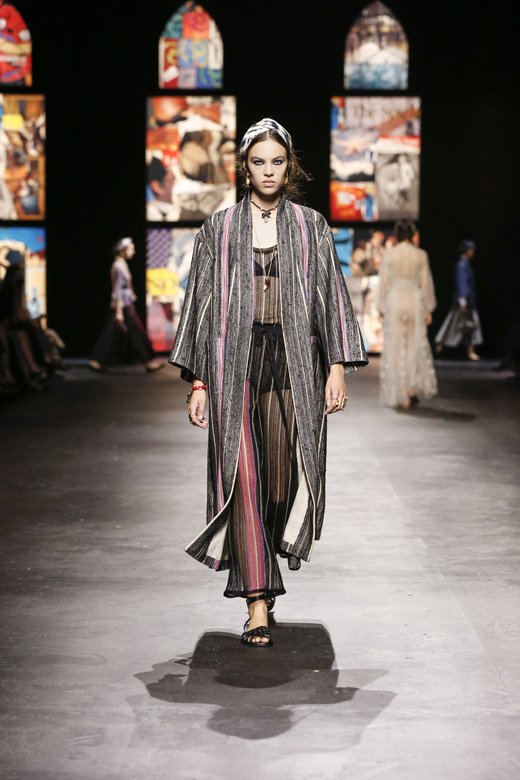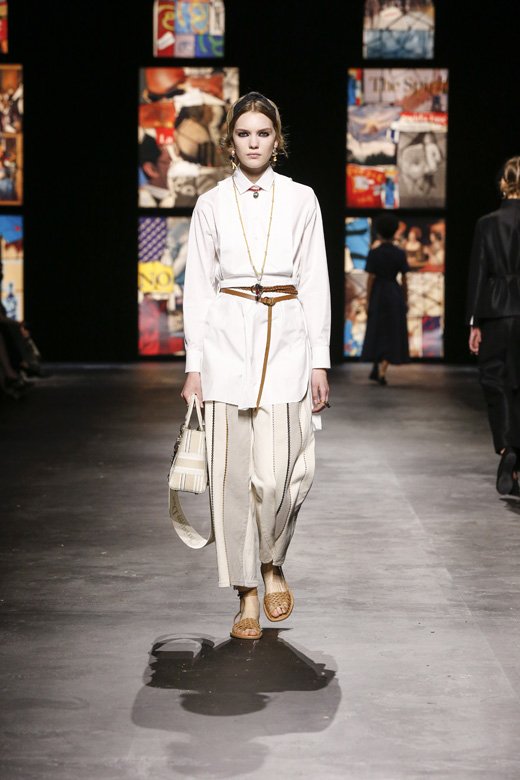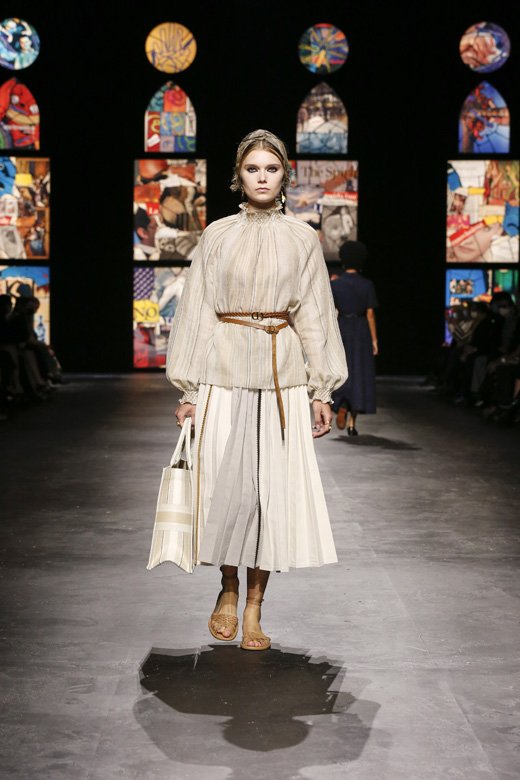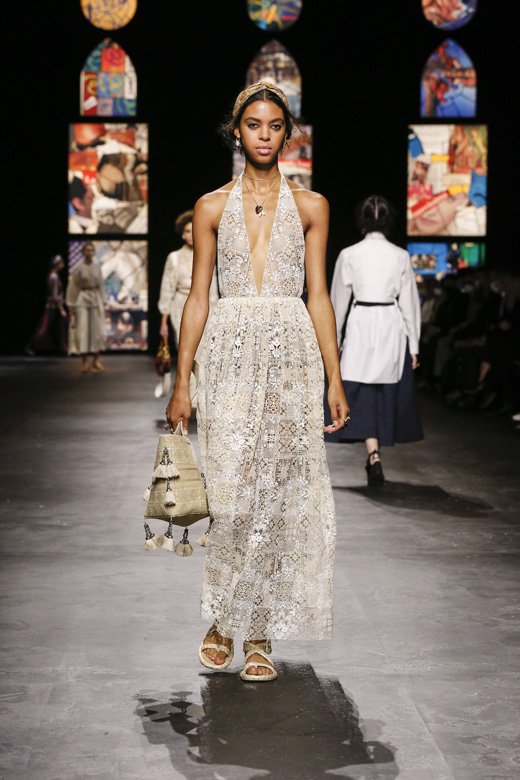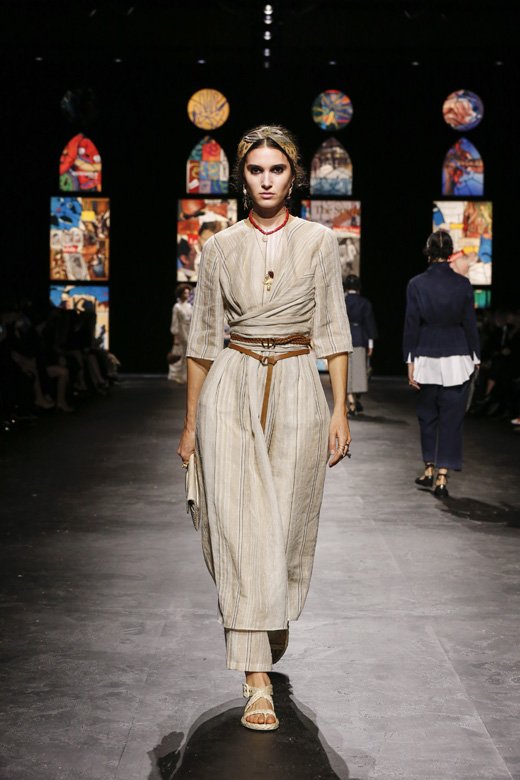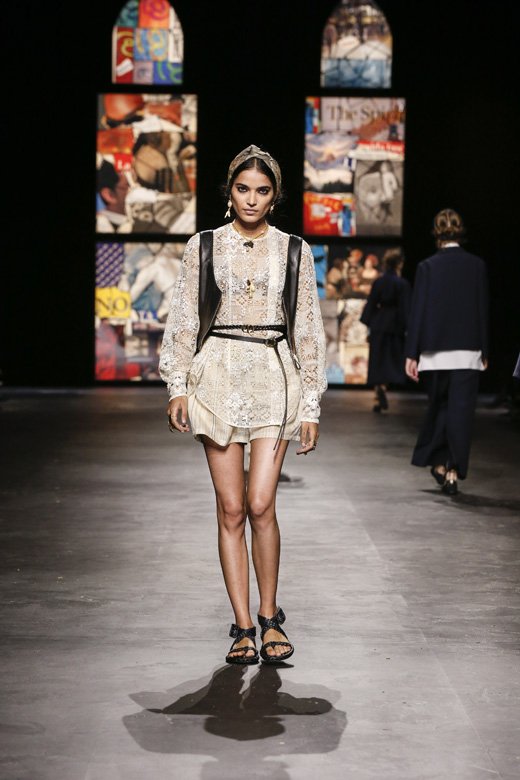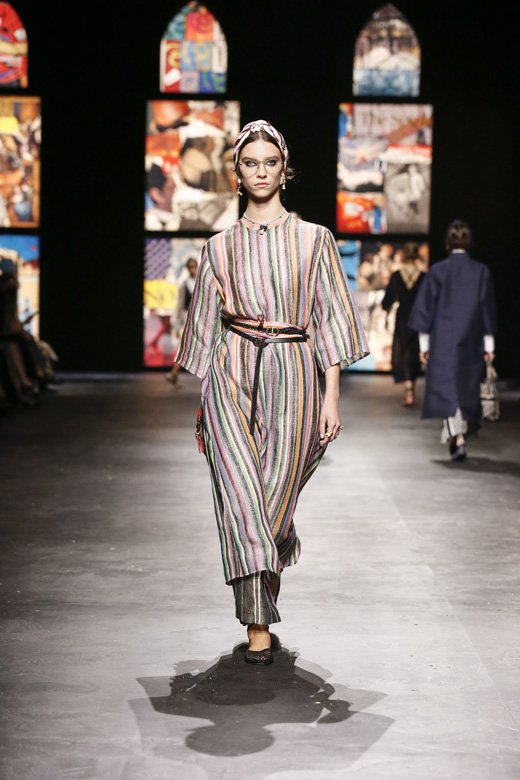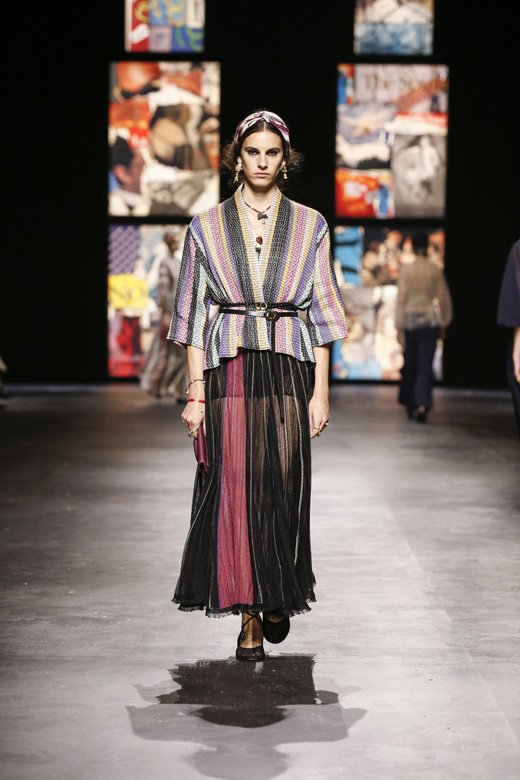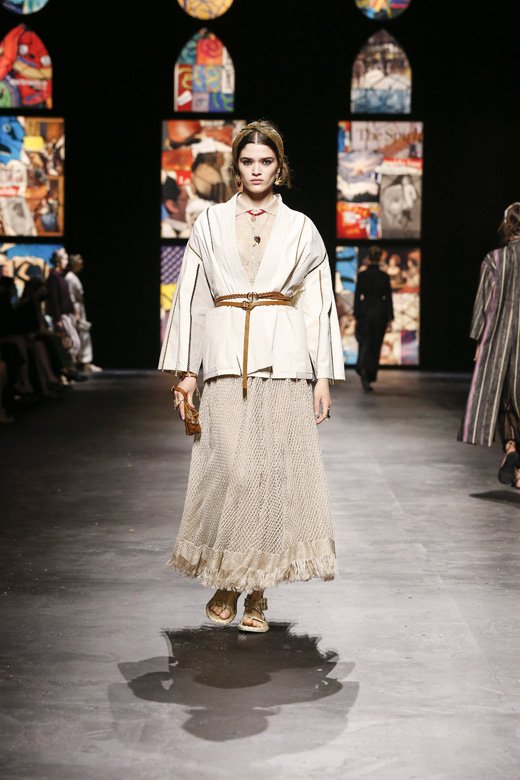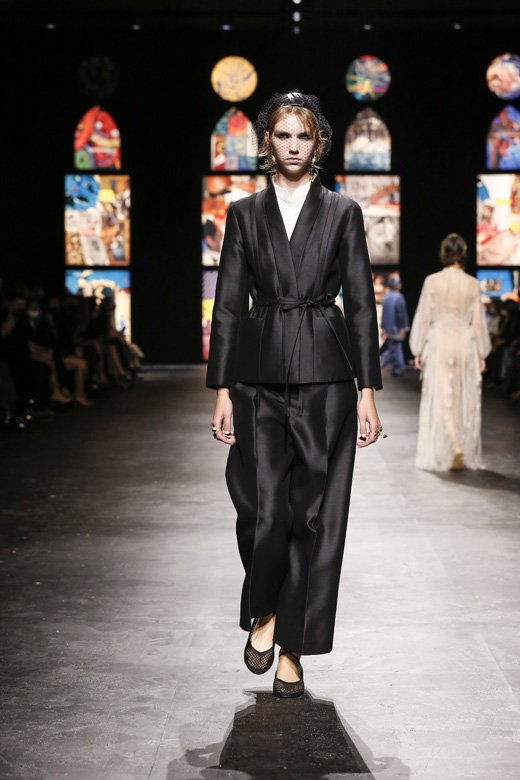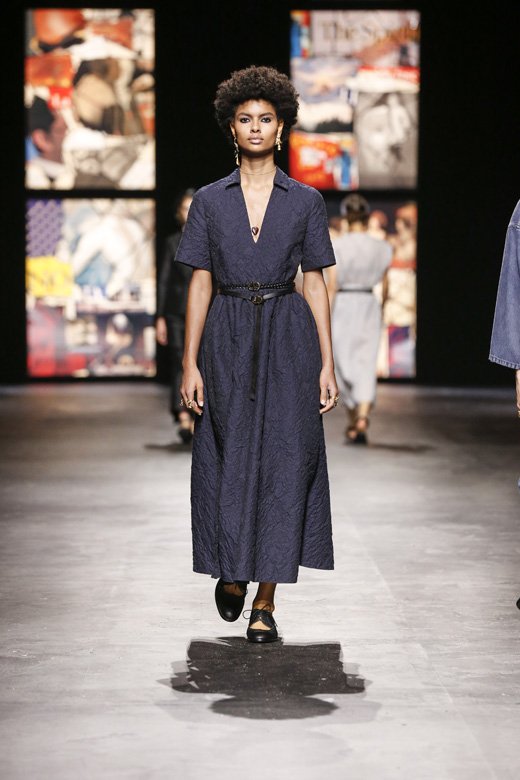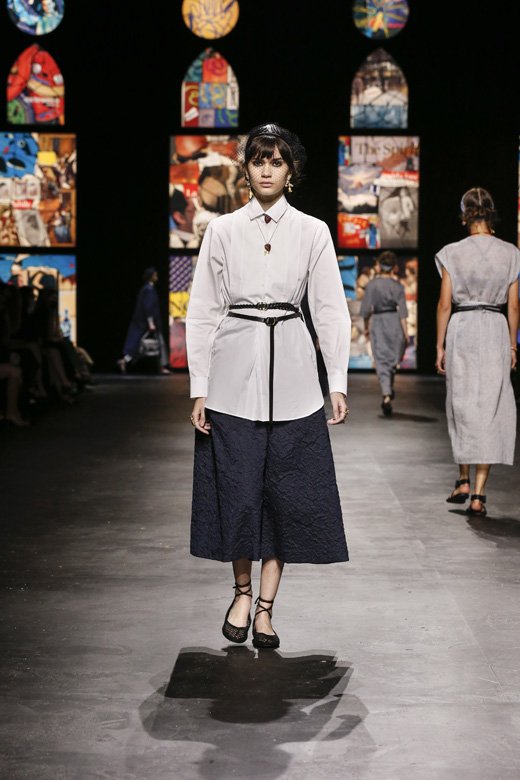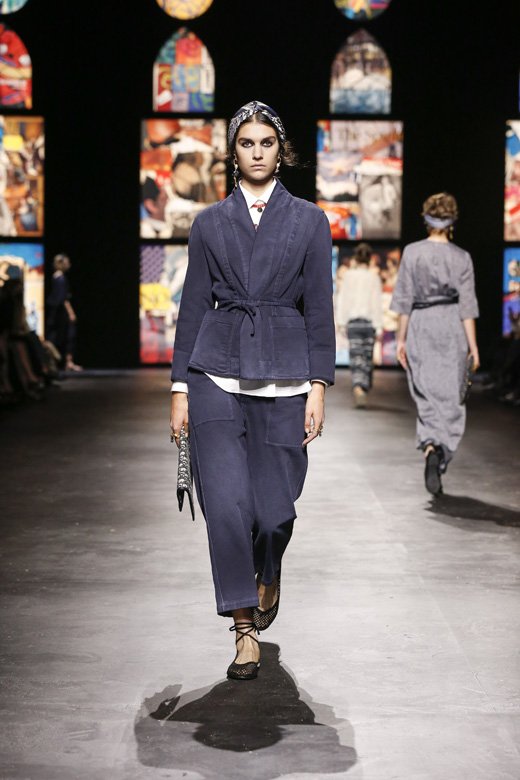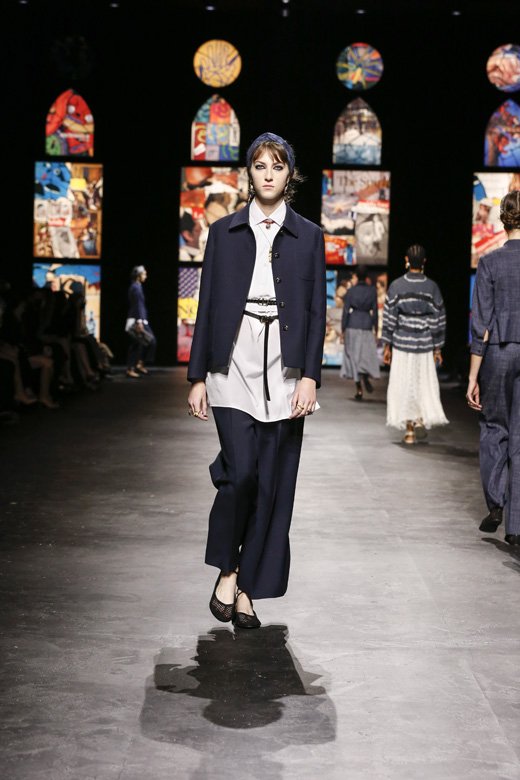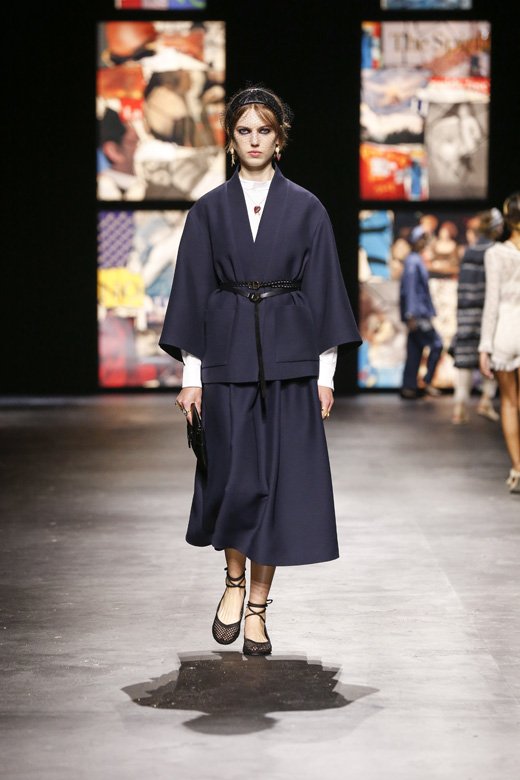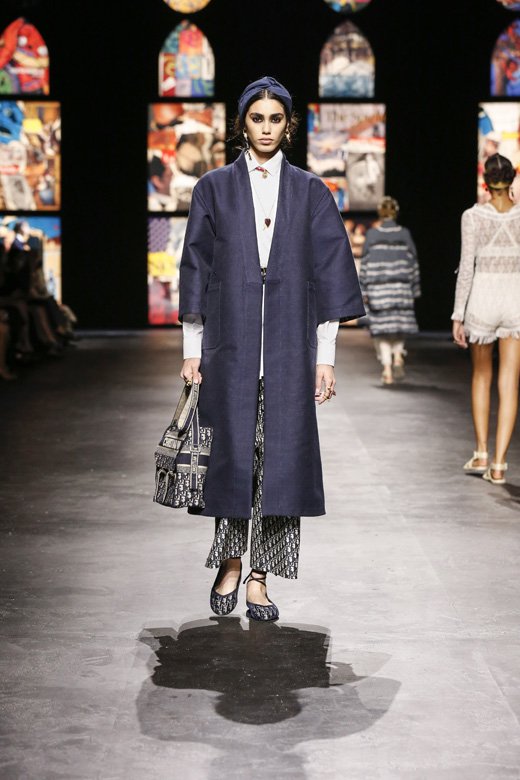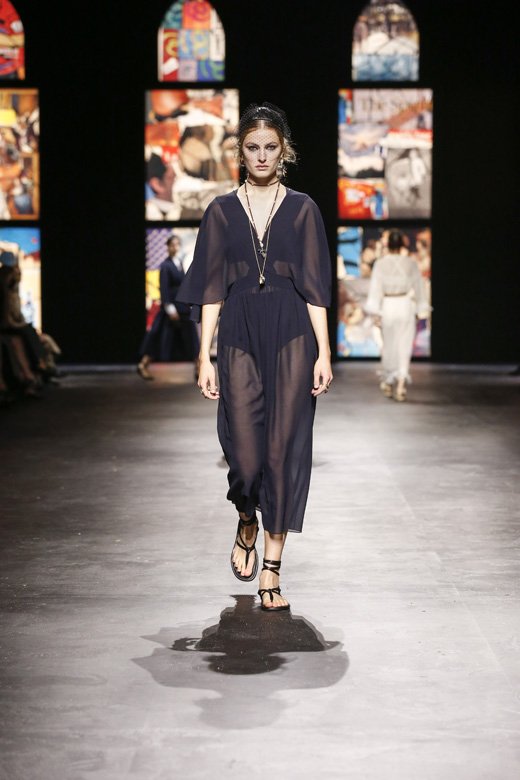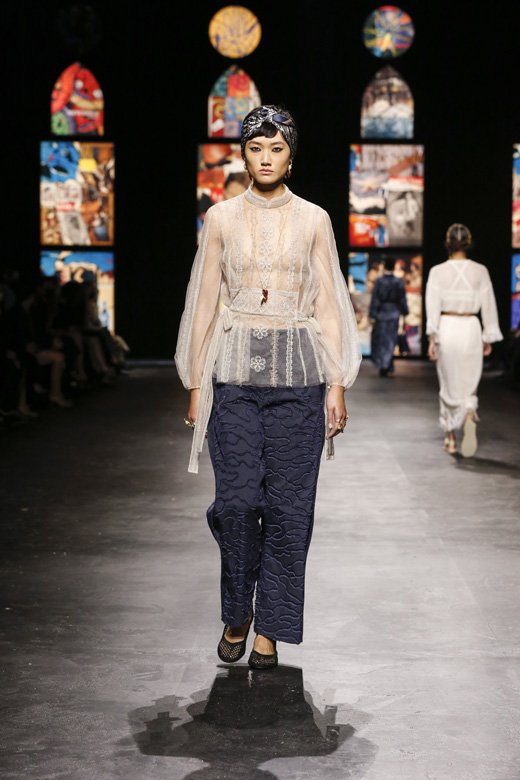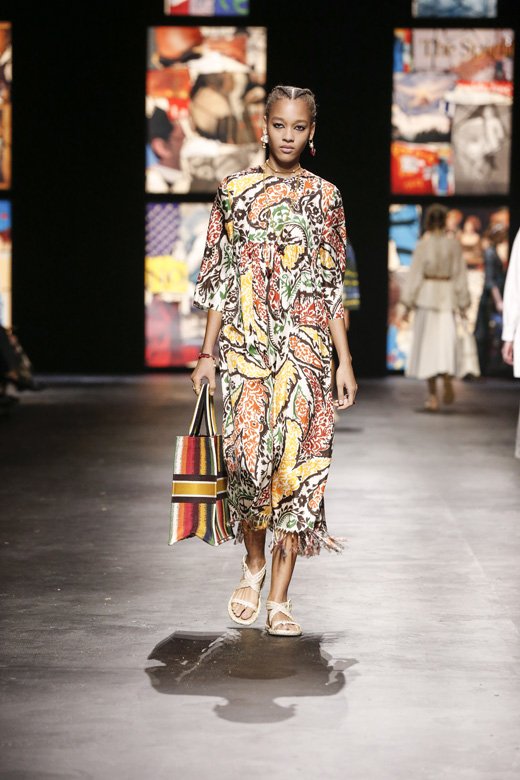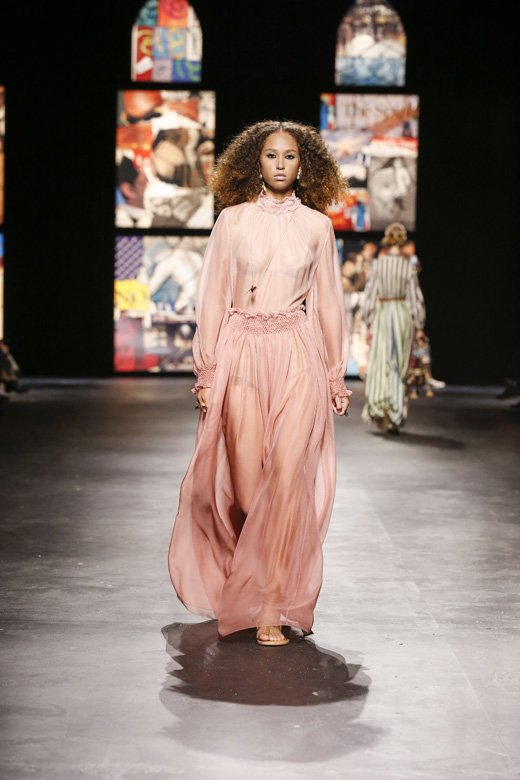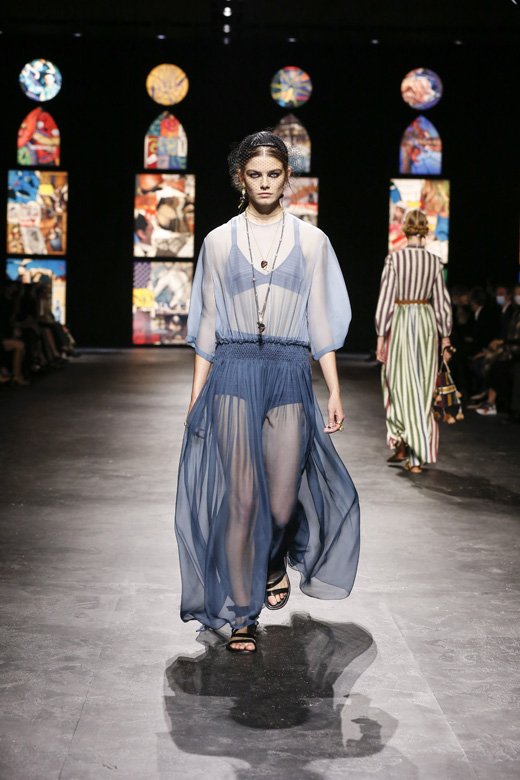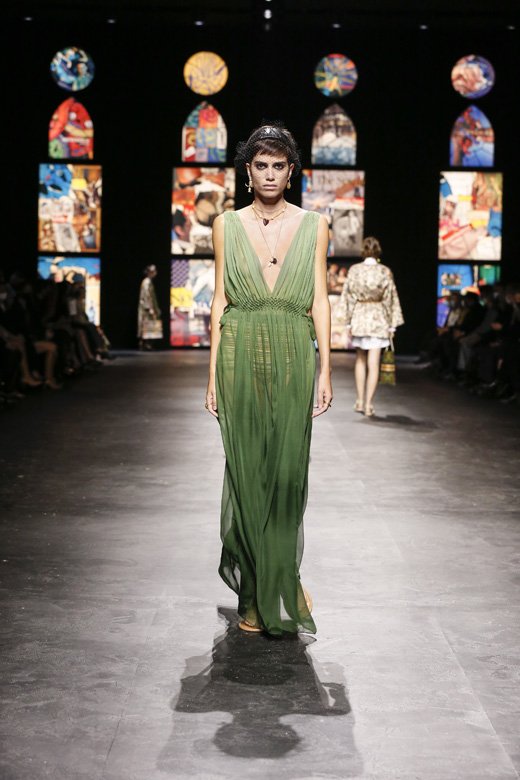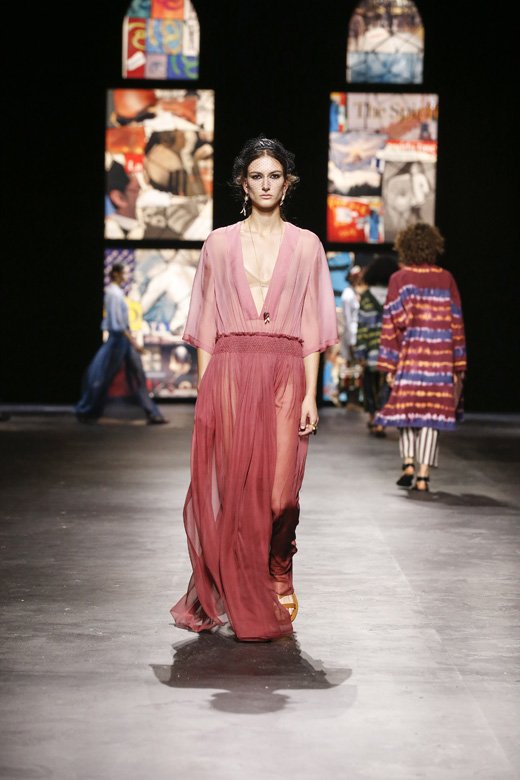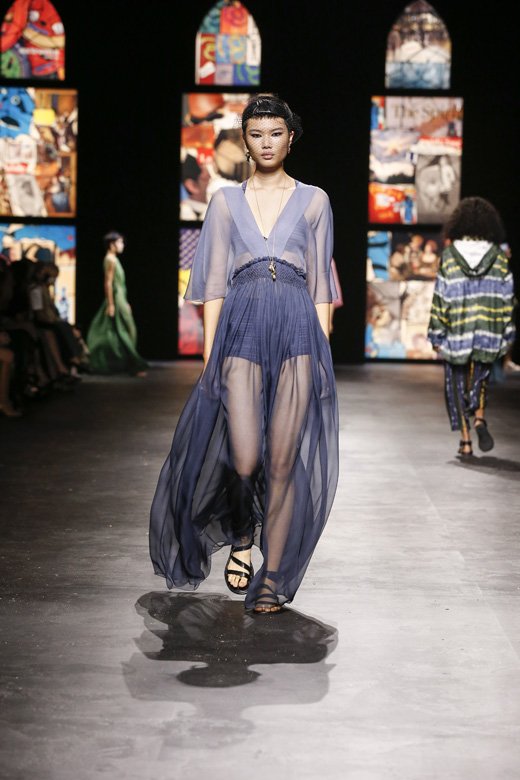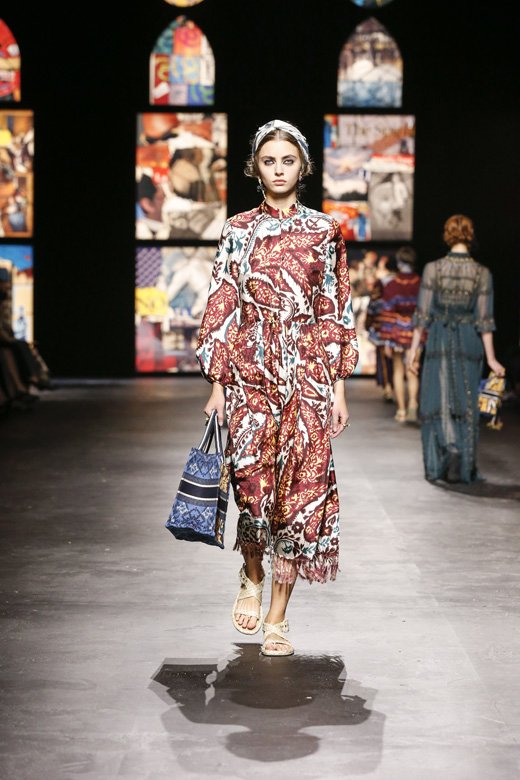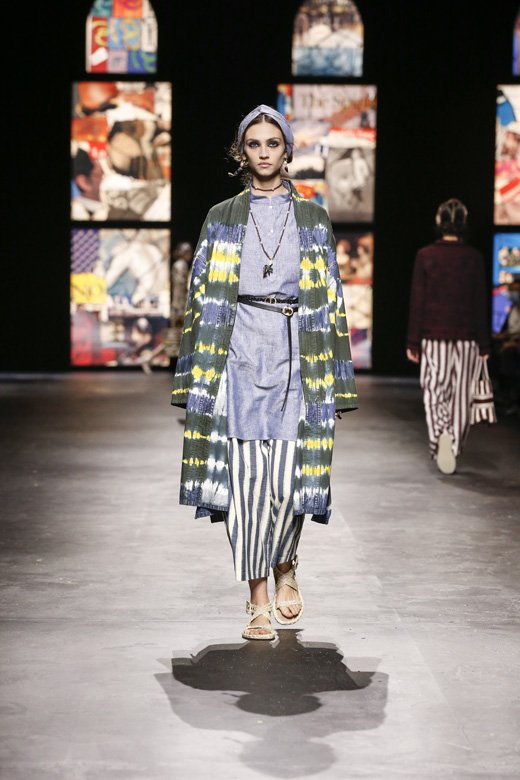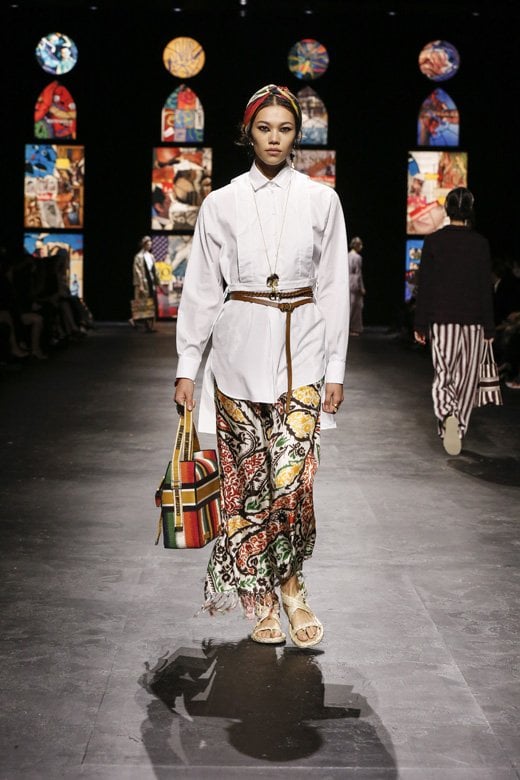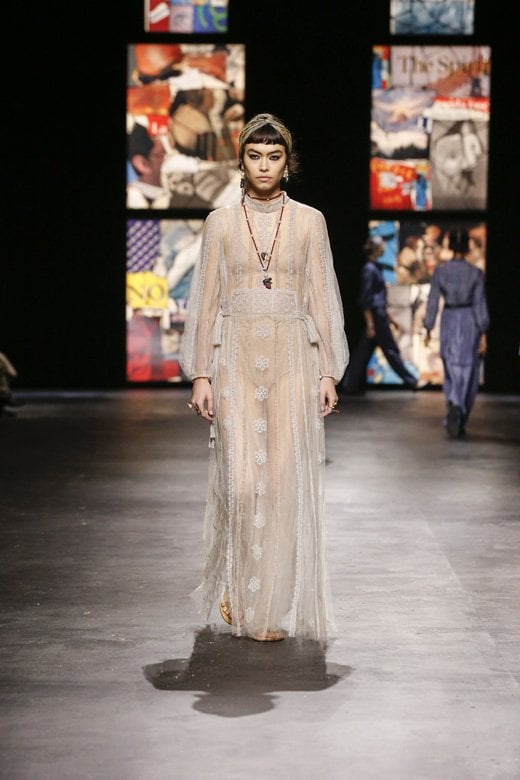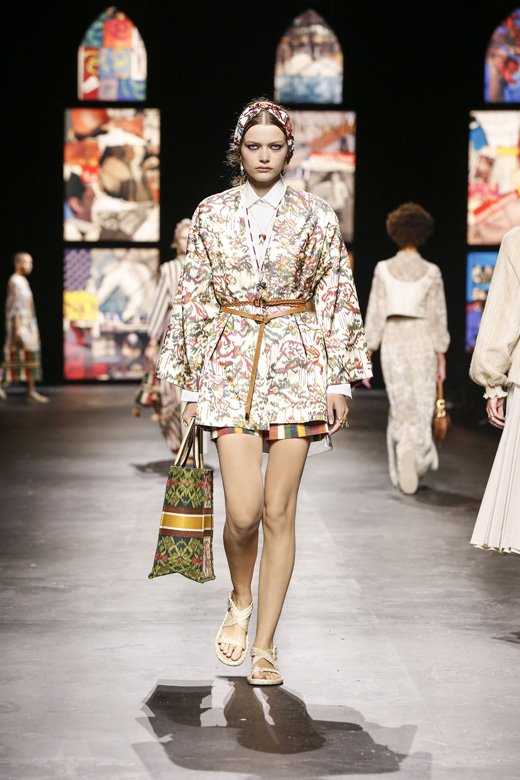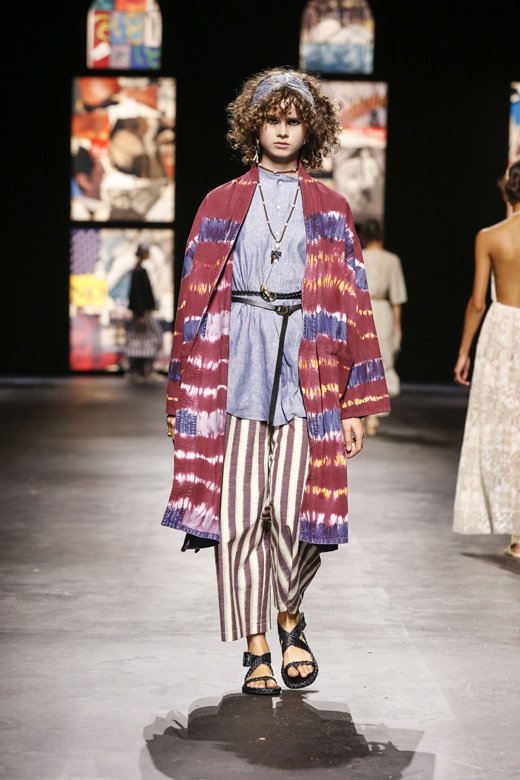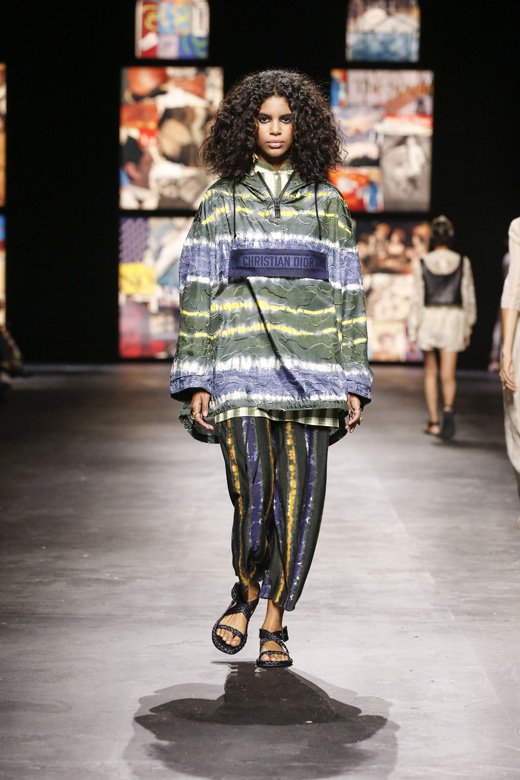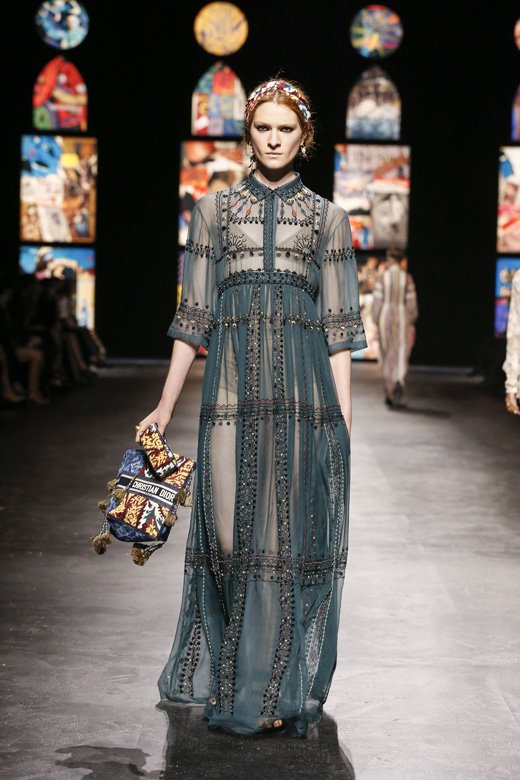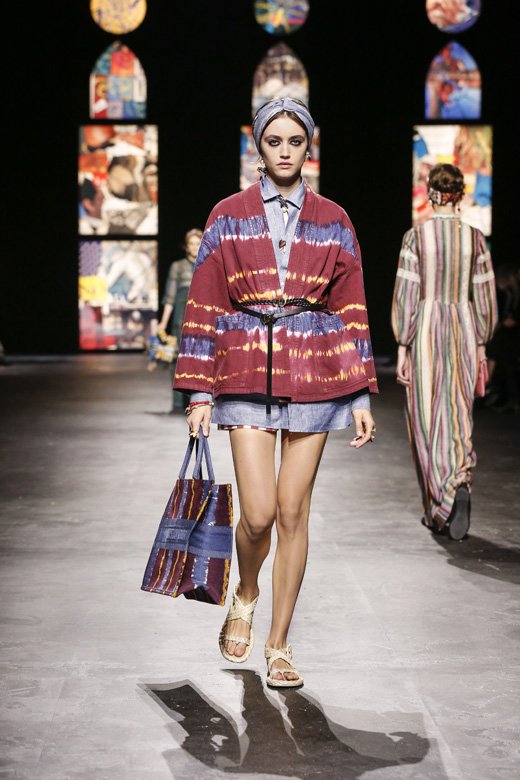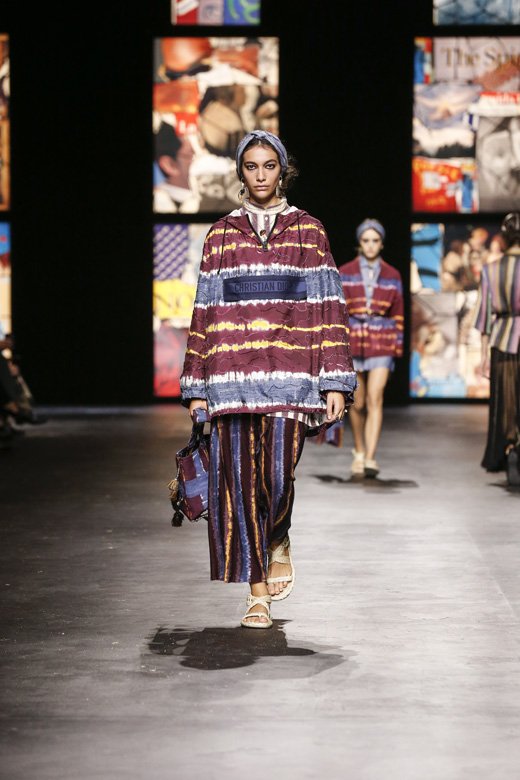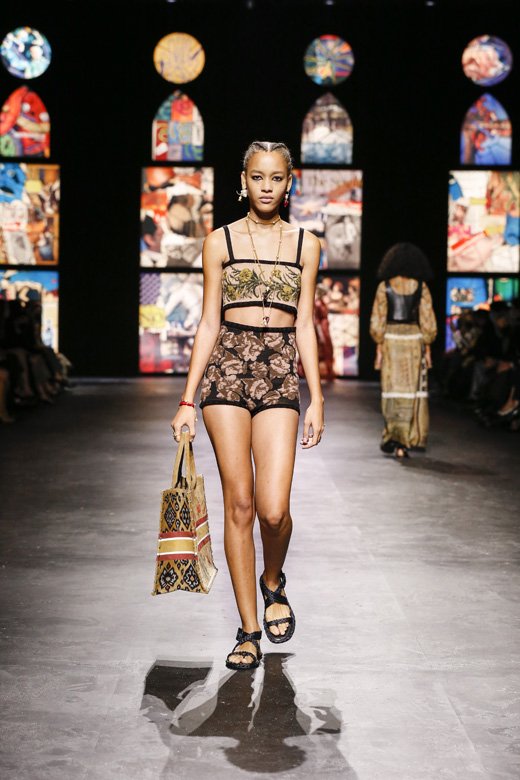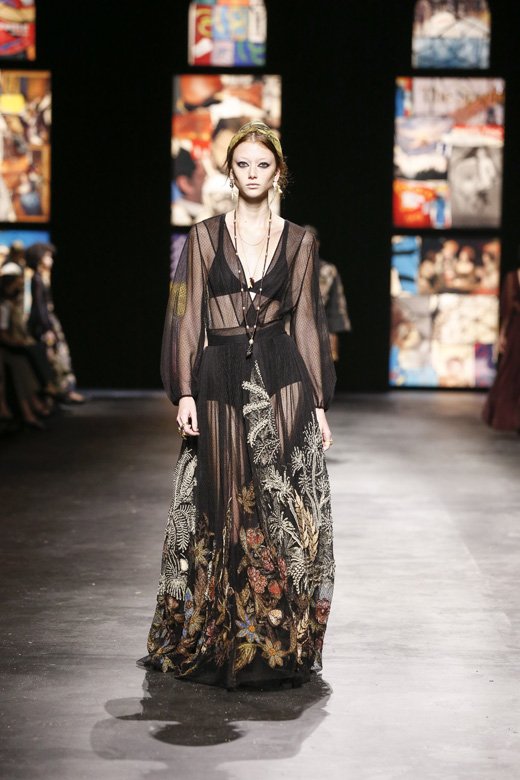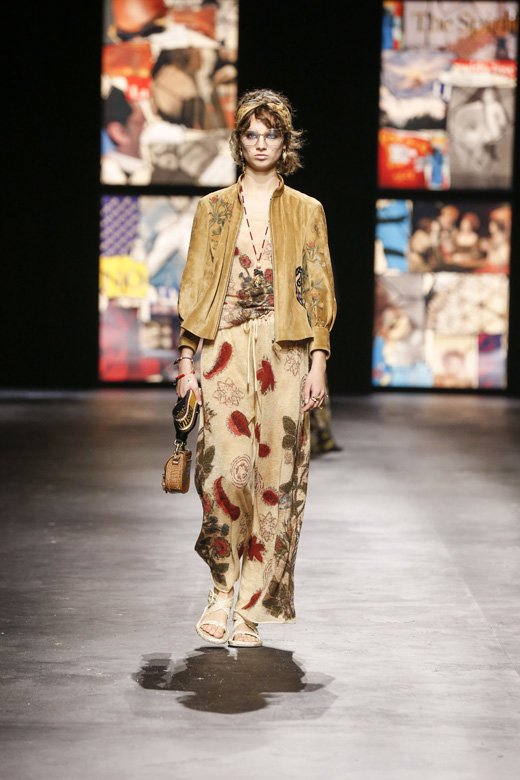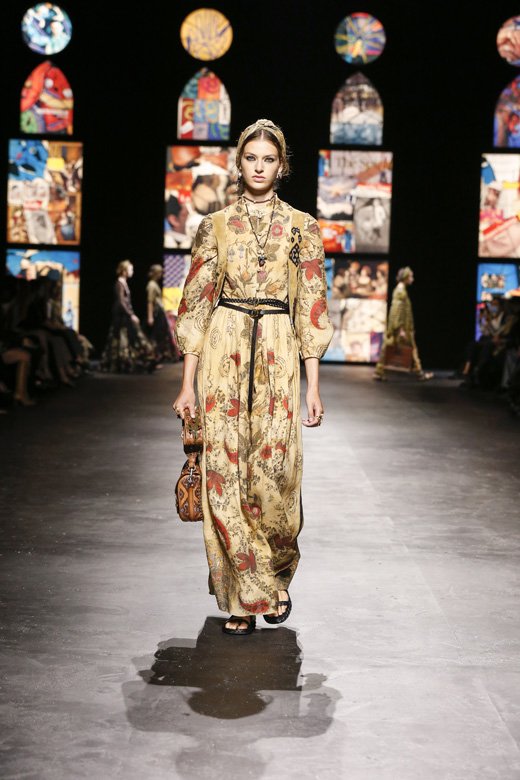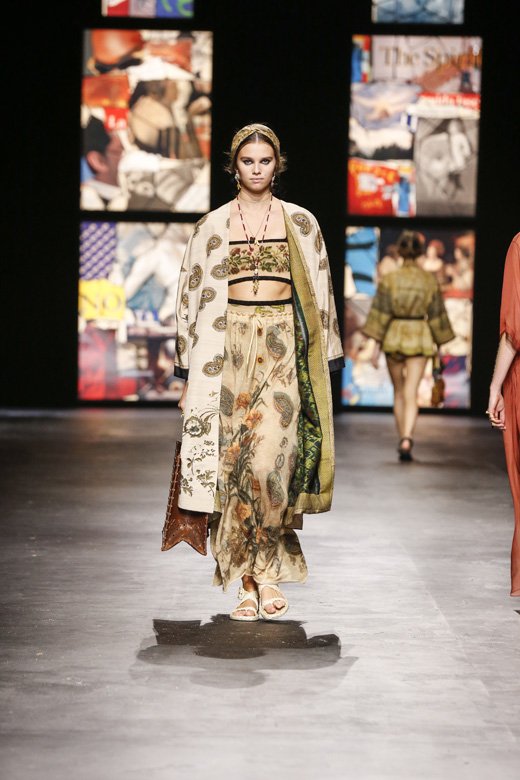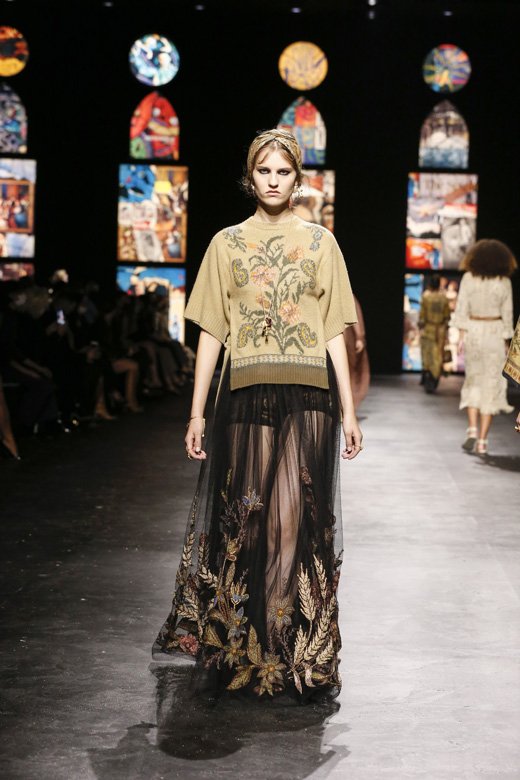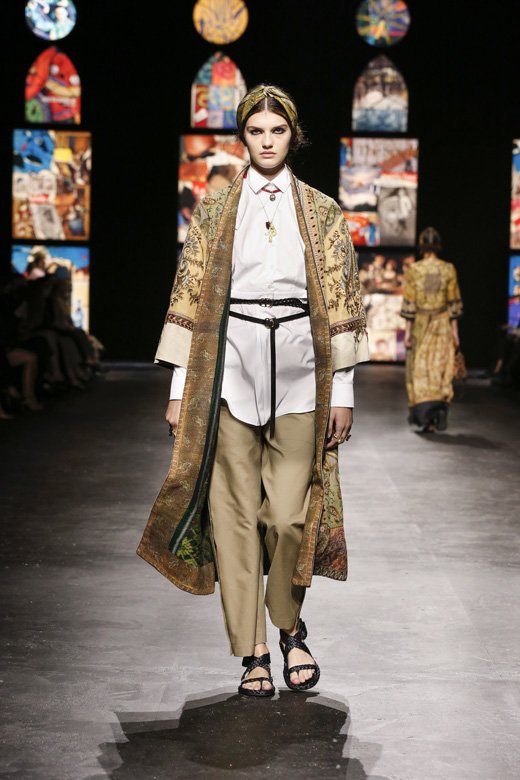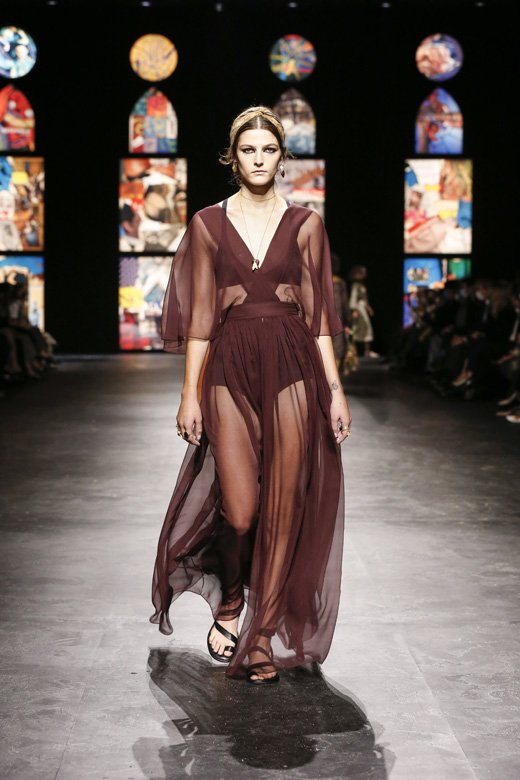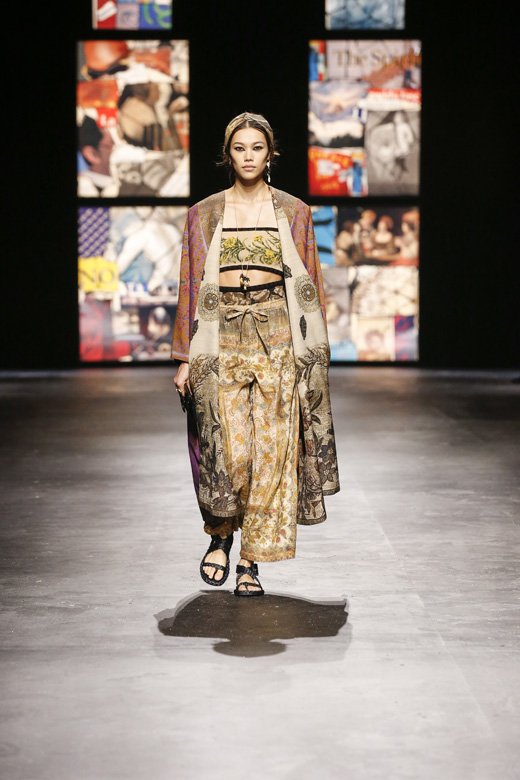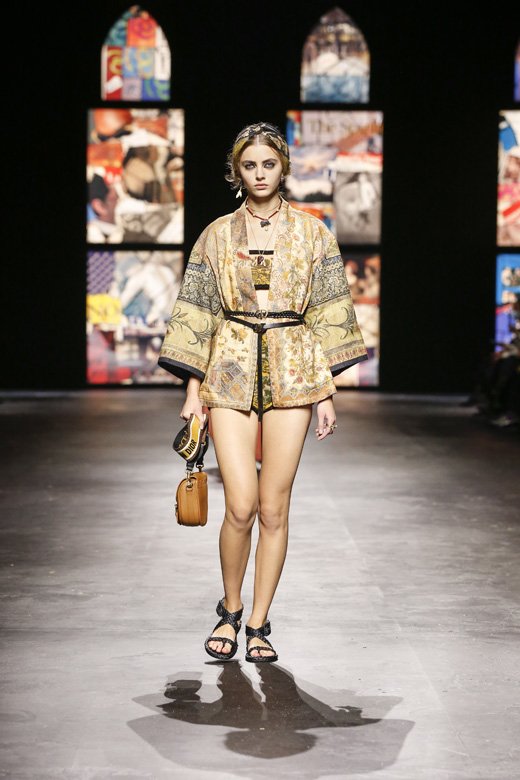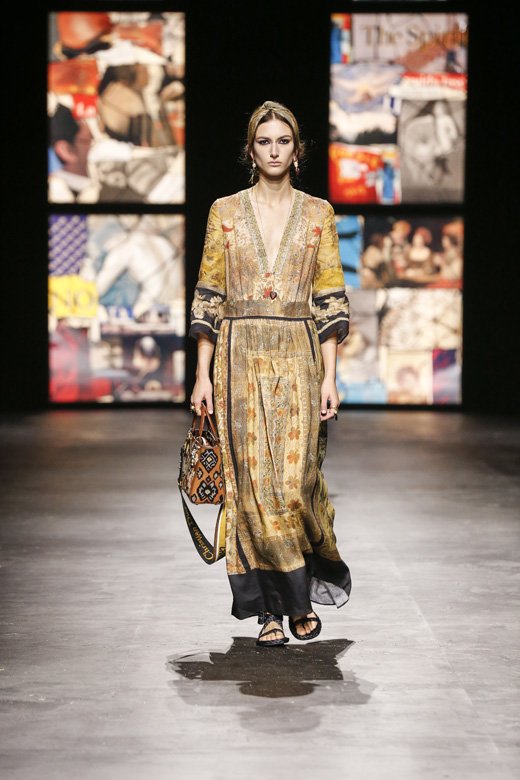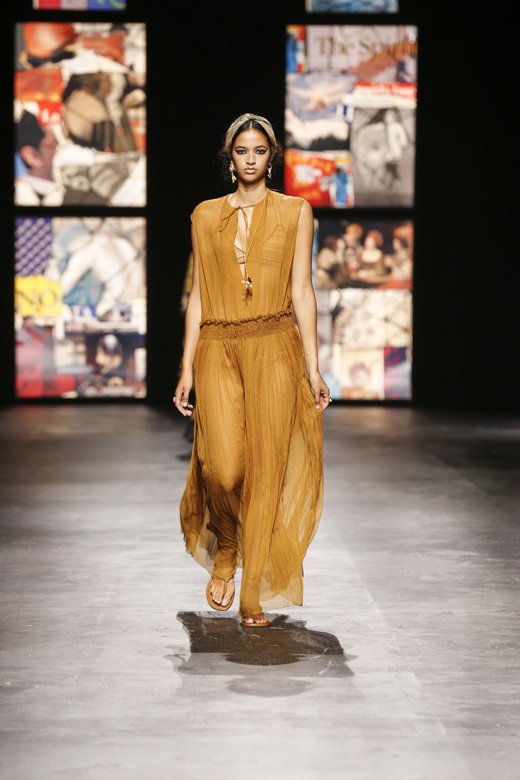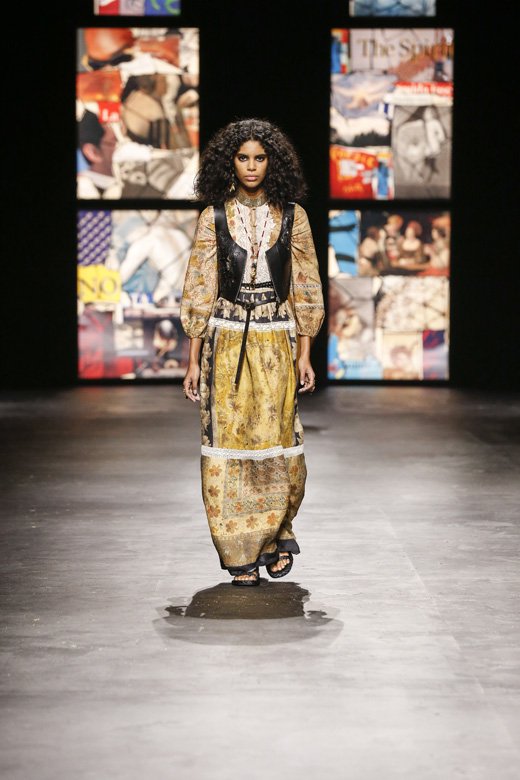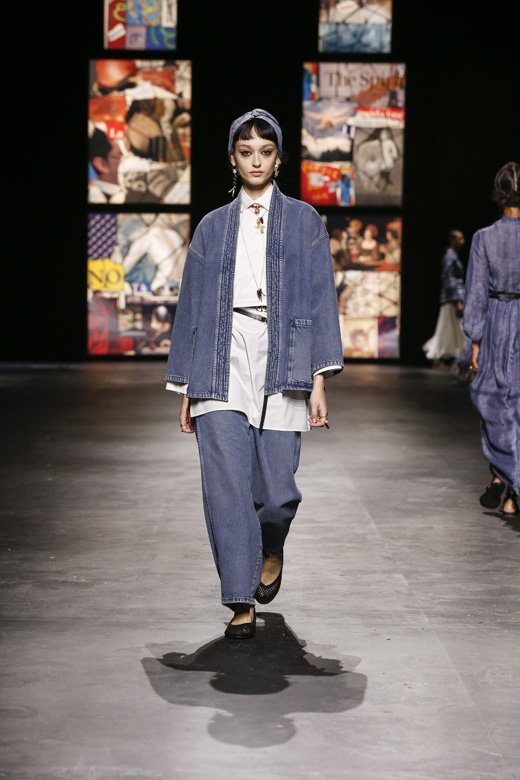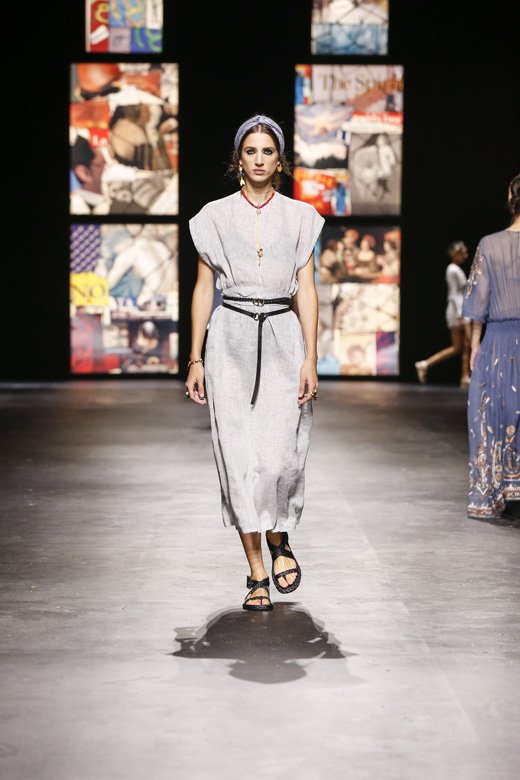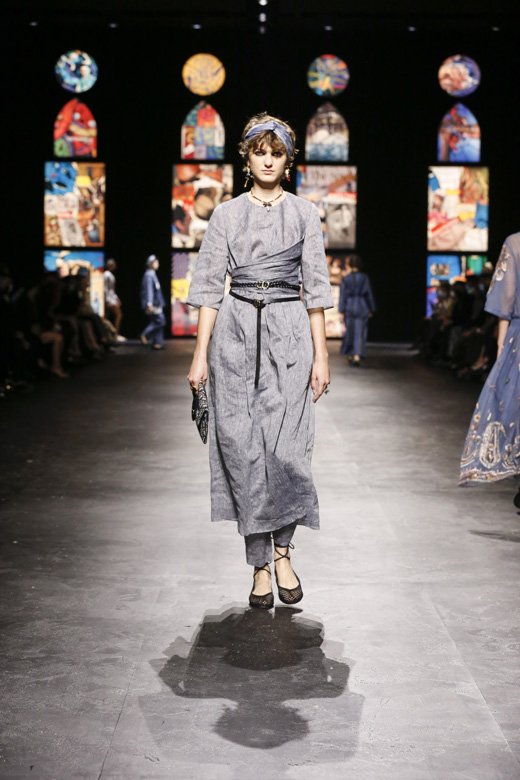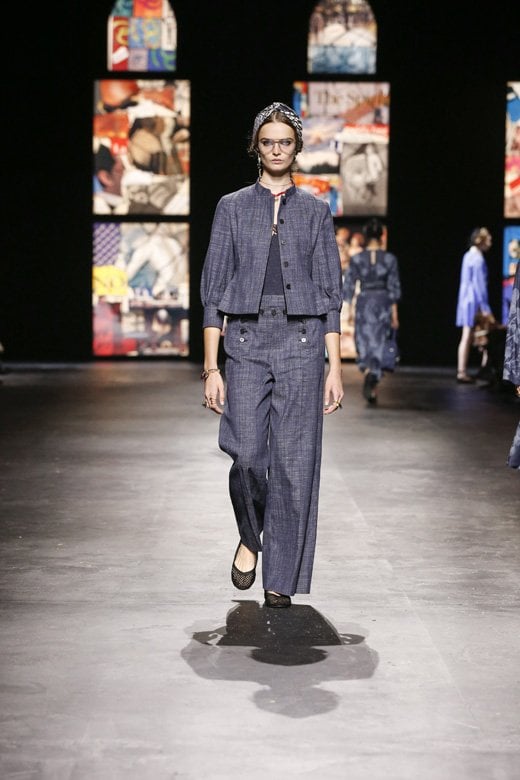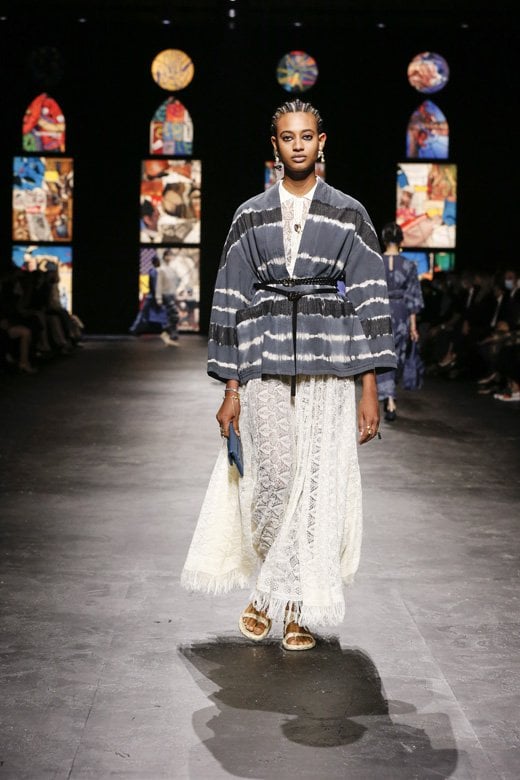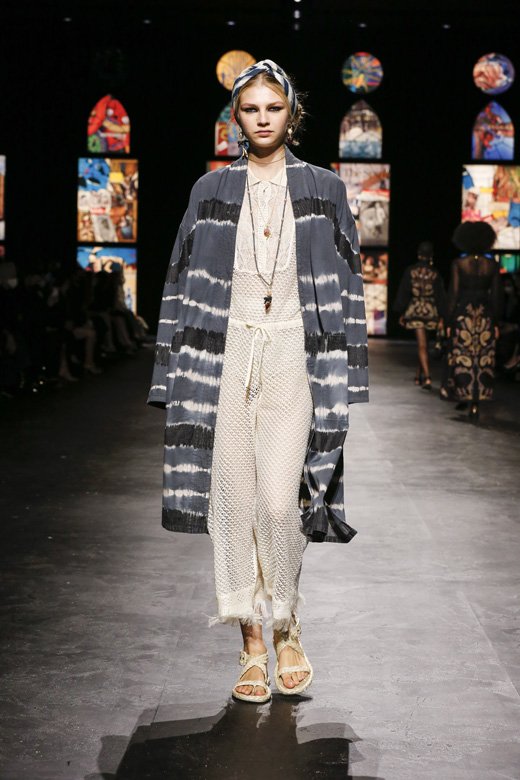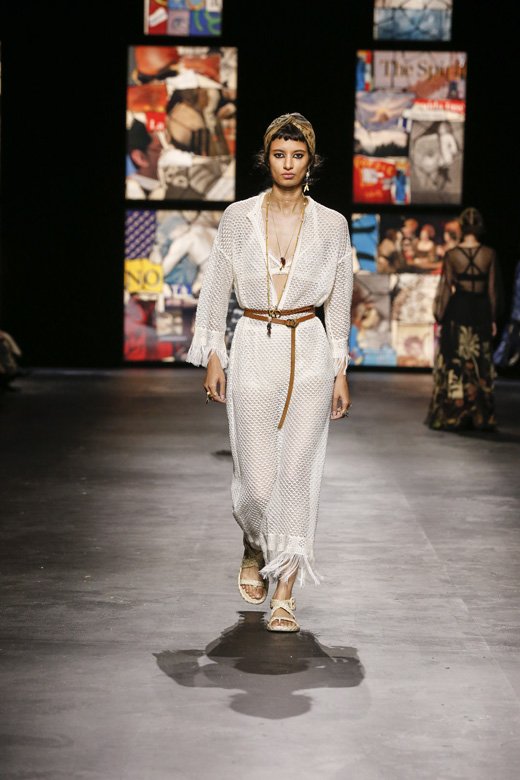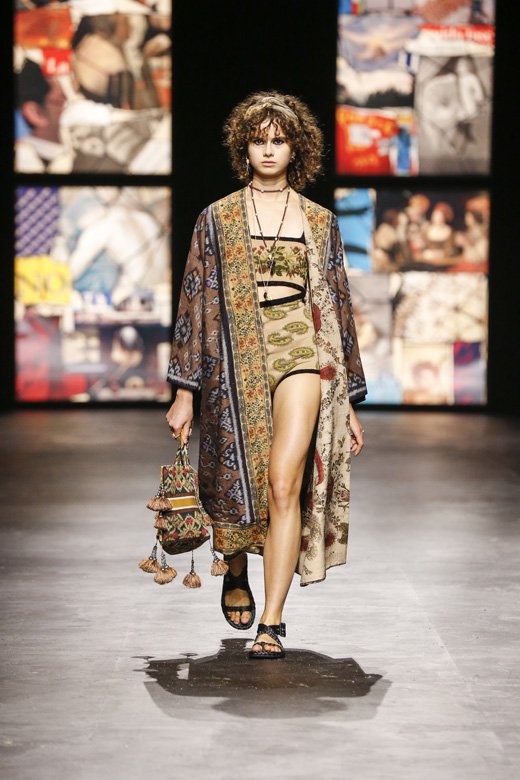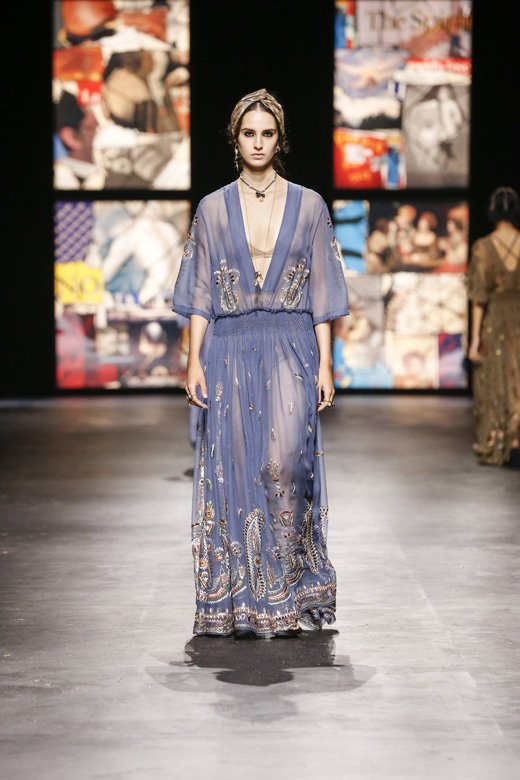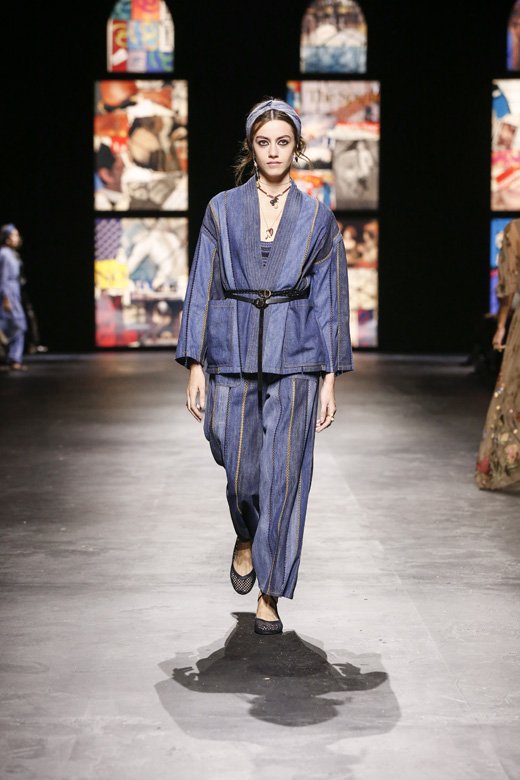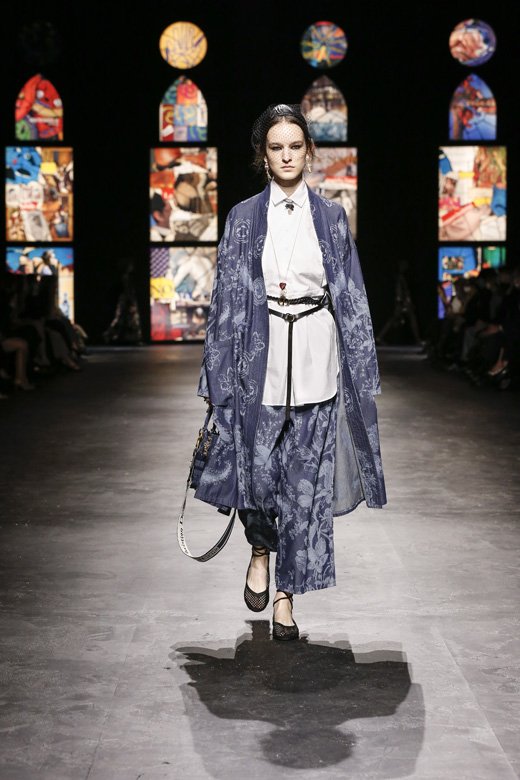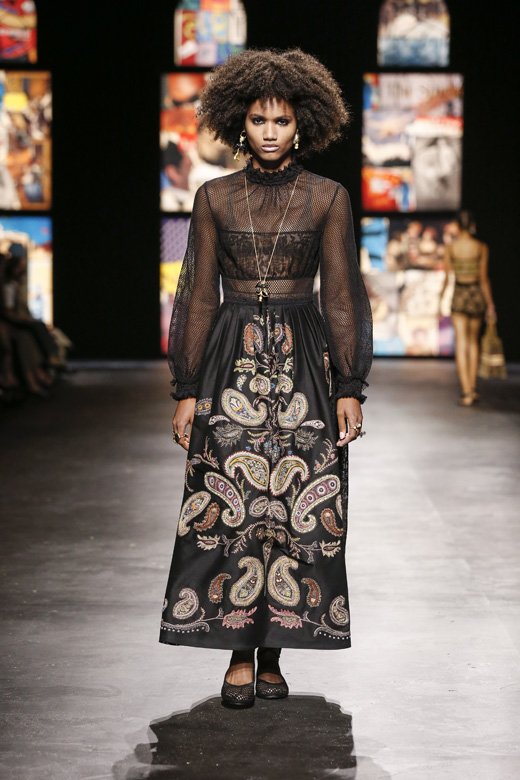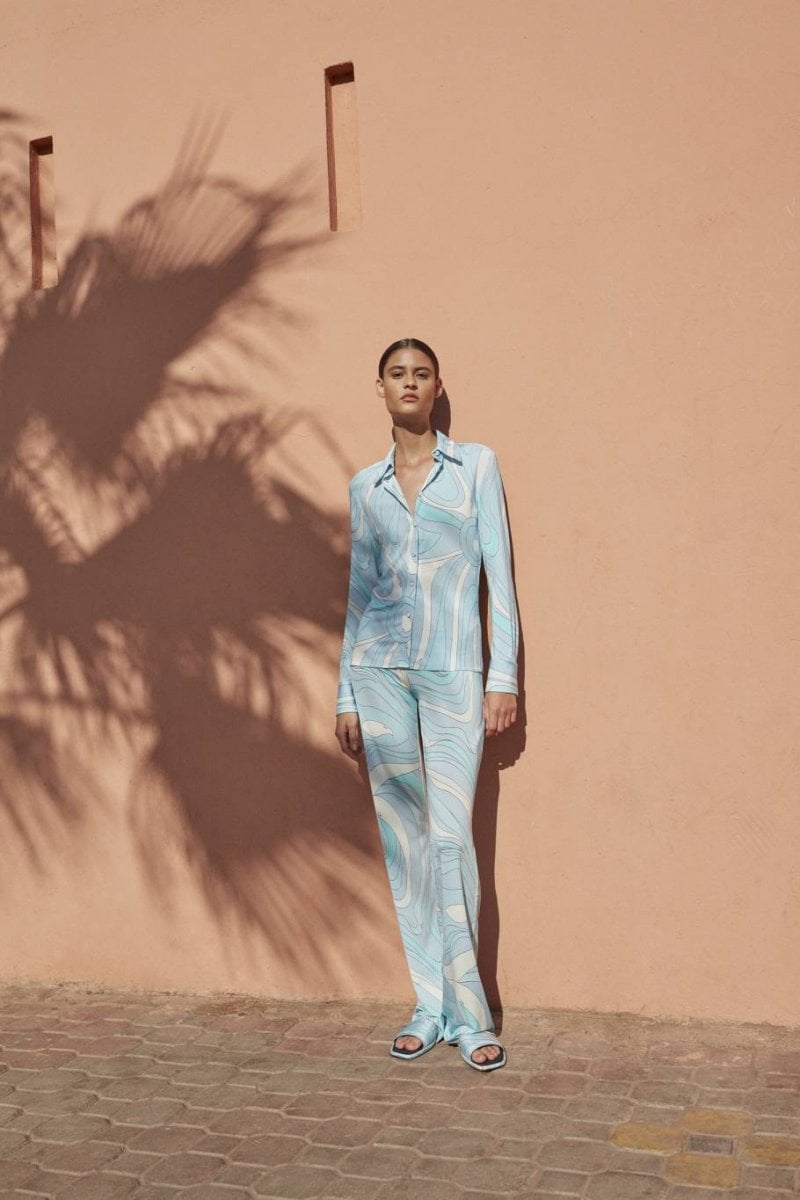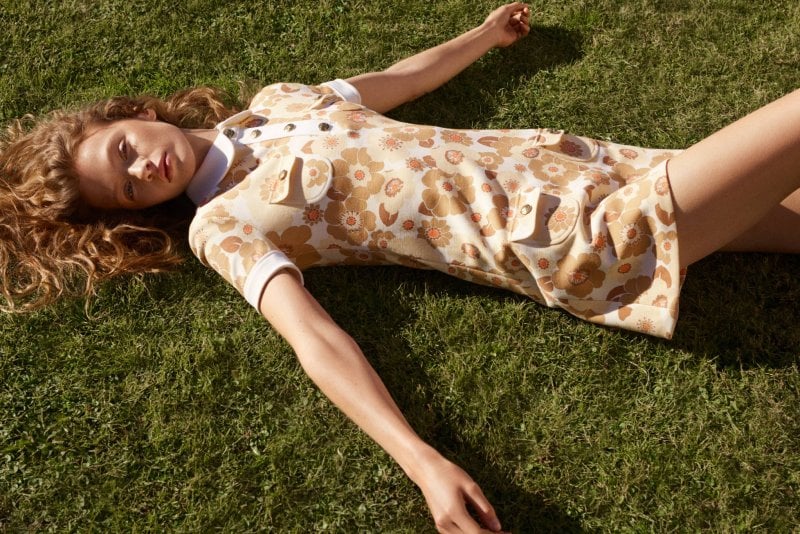Following Monsieur Christian Dior’s steps, Maria Grazia Chiuri doesn’t only consider fashion as a way to dress women, but also as a reflection on societal transformations and a reaction to current events. Therefore, it’s only natural to witness the birth of a collection compelled by a dual movement – life and fashion.
For her Spring-Summer 2021 collection, the creative director embodies the vital changes the world is undergoing following the current crisis through her creations while respecting the House’s heritage. Thoughts translate into cuts and the new way of living into shapes, resulting in a collection that pays tribute to intellectuals, poets and authors who express themselves through the way they dress in the comfort of their homes – whether wrapped in infinite layers of color like Virginia Woolf or dressed in a simple white shirt like Susan Sontang. The men’s shirt was reinvented to become a tunic or a dress paired with wide, striped trousers or shorts at times, and worn under ample coats in heathered fabrics at others. Accessorizing dresses and trousers were patchworks of scarves with paisley and floral motifs given a romantic feel through lace pieces.
Some long dresses in chiffon display a color palette of light, matte blue, deep ocher and pale orange, while others are embellished with beaded embroidery. And while some of them were accentuated at the waist with a smocking, others freely reflect the idea of beauty through movement – reviving the writings of Germano Celant: “The time has now come for fashion to decipher its latent forces and desires and recognize itself as a free and original discipline.”
Savoir-faire is at the heart of every Dior collection and this one is no exception. Setting this collection apart is Maria Grazia Chiuri’s way in combining two precious techniques, Indonesian ikat and chiné – which was developed in Europe in the 16th century. With both consisting of coloring the wrap threads before weaving, these techniques resulted in reversible coats and jackets that highlight world cultures and pay an ode to local artisans through the House’s commitment to safeguard them as a cultural asset.

Chiné technique

Indonesian ikat technique






